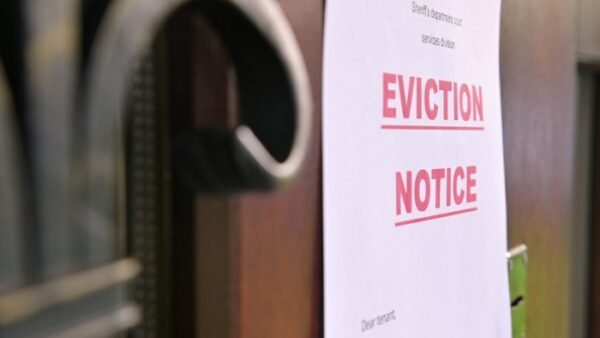As a landlord, it is crucial to understand the legal procedures and requirements when addressing problematic tenants or regaining possession of your property. One such procedure is serving a Section 8 notice, which allows you to seek possession in specific circumstances under the Housing Act 1988.
With the Renters’ Rights Bill set to take effect in 2026, the rules surrounding Section 8 are evolving — expanding certain grounds, increasing some notice periods, and reinforcing tenants’ protections. This updated guide will walk you through both the traditional Section 8 process and the new changes you need to be aware of.
Understanding Section 8
Section 8 refers to a provision in the Housing Act 1988 that allows landlords to seek possession of a property when a tenant has breached their tenancy agreement or when certain specific grounds apply.
Historically, landlords could also use Section 21 to regain possession without giving a reason — but the Renters’ Rights Bill abolishes Section 21. This means Section 8 will become the main legal route for regaining possession of a property, making it more important than ever for landlords to understand it thoroughly.
Valid Grounds for Serving a Section 8 Notice
Before serving a Section 8 notice, landlords must have valid grounds to do so. These grounds are set out in Schedule 2 of the Housing Act 1988, and they are divided into two main categories:
- Mandatory Grounds – the court must grant possession if the landlord can prove the ground applies.
- Discretionary Grounds – the court decides whether it is reasonable to grant possession based on the evidence.
The Renters’ Rights Bill has expanded and clarified these grounds into three practical categories:
- Landlord reasons (no fault grounds)
- Tenant fault grounds
- Miscellaneous/special circumstances
Below is a summary of the most relevant updates for landlords.

Category 1: Landlord Reasons (“No Fault” Grounds)
These are situations where the landlord needs to regain possession for personal or operational reasons.
1. Landlord Intends to Sell (Ground 1A – Mandatory, 4 Months’ Notice)
A new ground introduced by the Renters’ Rights Bill allows a landlord to seek possession if they genuinely intend to sell the property.
- The tenancy must have lasted at least one year before the notice expires.
- The landlord must give at least four months’ notice.
- The property cannot be re-let or marketed during a restricted 12-month period following the notice, to prevent misuse of this ground.
2. Landlord or Family Member Intends to Move In (Ground 1 – Mandatory, 4 Months’ Notice)
This existing ground has been widened. A landlord may now reclaim the property if they or close family (including parents, children, siblings, or grandparents) intend to live there.
As with Ground 1A, the landlord must give four months’ notice, and the property cannot be re-let within the restricted period.
3. Redevelopment by Landlord (Ground 6 – Mandatory, 4 Months’ Notice)
Landlords can regain possession if they intend to carry out substantial redevelopment or demolition that cannot reasonably be done with tenants in situ — for example, a major renovation to improve EPC ratings.
4. Mortgage Repossession (Ground 2 – Mandatory, 4 Months’ Notice)
This ground has been simplified: the property can be repossessed by a lender even if refinancing occurred during the tenancy, and landlords are no longer required to give tenants prior notice of this potential ground.
Category 2: Tenant Fault Grounds
These are the most common reasons for serving a Section 8 notice.
1. Rent Arrears
Rent arrears remain one of the most frequently used grounds.
Serious Rent Arrears (Ground 8 – Mandatory, 4 Weeks’ Notice)
- The threshold for mandatory eviction has increased from two months’ arrears to three months’ arrears.
- The tenant must owe at least three months’ rent both at the time the notice is served and at the court hearing.
- The court must grant possession if these conditions are met.
- However, the ground will not apply if arrears are due to delayed Universal Credit payments.
Any Rent Arrears (Ground 10 – Discretionary, 4 Weeks’ Notice)
- Can be used where any amount of rent is unpaid at both the notice and hearing stages.
- The court will decide whether possession is reasonable.
Before you serve section 8, make sure you have sent them a rent arrears letter. This formal reminder records communication and demonstrates reasonable efforts to resolve the issue before legal action.
2. Anti-Social Behaviour and Criminal Activity
Serious Anti-Social Behaviour (Ground 7A – Mandatory, Immediate)
For severe cases such as violence, intimidation, or serious nuisance, landlords can act immediately. Courts can grant possession without any notice period.
Anti-Social Behaviour (Ground 14 – Discretionary, Immediate)
For ongoing nuisance or neighbour complaints, the court will assess reasonableness — taking into account efforts to resolve the issue and the impact on others.
3. Breach of Tenancy Agreement (Ground 12 – Discretionary, 2 Weeks’ Notice)
Landlords may use this ground when a tenant breaches any term of the tenancy — for example, keeping an unauthorised pet, damaging property, or refusing access for repairs.
4. Property or Furniture Damage (Grounds 13 & 15 – Discretionary, 2 Weeks’ Notice)
If the tenant or their guests have caused deterioration to the property or its furnishings, landlords can seek possession under these grounds.
5. False Statement by Tenant (Ground 17 – Discretionary)
If the tenancy was obtained through a false or misleading statement, landlords may use this ground for eviction.
Category 3: Other Special Grounds
1. Death of Tenant (Ground 7 – Mandatory, 2 Months’ Notice)
Landlords can seek possession within 12 months of the tenant’s death if no succession rights apply.
2. No Right to Rent (Ground 7B – Mandatory, 2 Weeks’ Notice)
If the Home Office confirms that a tenant has no legal right to rent in the UK, this ground can be used for possession.
3. Supported Housing, Employment, or Homelessness Duty Grounds
The Renters’ Rights Bill also introduces several specialist grounds (5A–5H) covering supported accommodation, key worker housing, and temporary homelessness arrangements. These mainly apply to housing associations or registered providers.
Preparing and Serving the Section 8 Notice
To serve a Section 8 notice, you must complete the official Form 3 (or Form 6A depending on the tenancy type). The notice must clearly:
- Identify which grounds you are relying on (by number).
- Include the required notice period for each ground.
- Be accurately dated and signed.
Methods of Service
- Personal Delivery – Hand it directly to the tenant or leave it with an adult resident.
- Posting Through the Letterbox – A practical option but less secure.
- Professional Process Server – Recommended for contentious cases, as they can provide a certificate of service for court use.
Always keep proof of service — such as delivery receipts, witness statements, or photos of posted notices.
Evidence and Court Procedure
Unlike Section 21, landlords using Section 8 must prove to the court that the grounds for possession are valid.
Tenants may present counter-evidence, and the court will decide based on the balance of probabilities.
For discretionary grounds, the court will only order possession if it believes eviction is reasonable.
Sanctions and Compliance under the Renters’ Rights Bill
The new legislation introduces penalties for misuse of Section 8 grounds:
- A landlord or agent who wrongly relies on a ground knowing it does not apply may face criminal prosecution or fines of up to £40,000.
- Unlawful eviction or harassment can also result in fines up to £40,000 and rent repayment orders of up to two years’ rent.
- Landlords must now be registered on the national landlord database; the court cannot grant possession if the landlord or property is unregistered (except for serious anti-social behaviour grounds).
Seeking Legal Advice
Given the changes under the Renters’ Rights Bill, Section 8 procedures have become more technical. Any mistake — from misquoting the wrong ground to serving an incorrect notice period — could invalidate your claim.
It’s strongly recommended to seek guidance from a qualified housing solicitor or landlord law specialist. They can ensure your notice is compliant, your evidence is solid, and your rights are protected throughout the process.
Conclusion
The Section 8 process remains an essential tool for landlords seeking to regain possession of their property — but it’s now more complex than before.
The abolition of Section 21 means landlords must rely entirely on Section 8, following correct notice periods, evidence requirements, and new rules under the Renters’ Rights Bill.
By staying informed, maintaining clear communication with tenants, and seeking professional advice where needed, landlords can navigate this new legal landscape confidently and lawfully.
Disclaimer: This blog post is intended for informational purposes only and should not be considered legal advice. Consult with a qualified legal professional for advice tailored to your specific circumstances.






